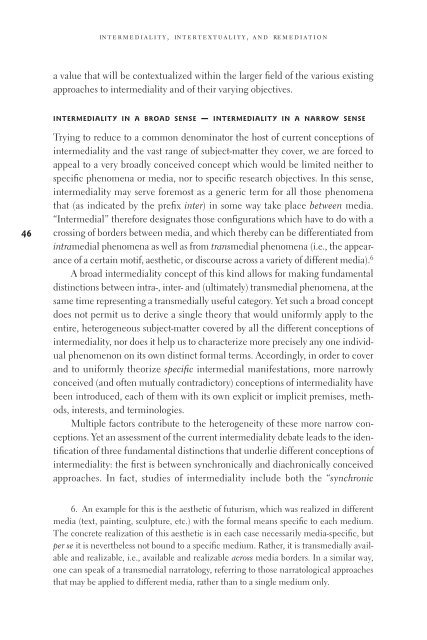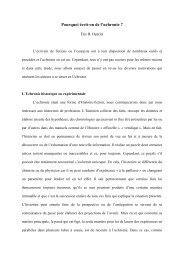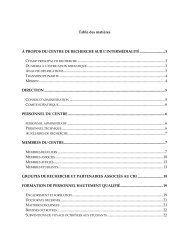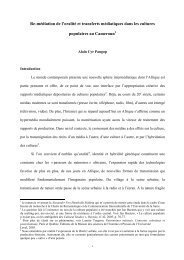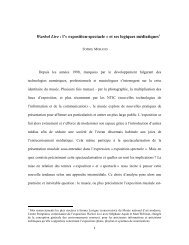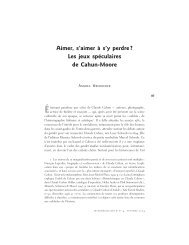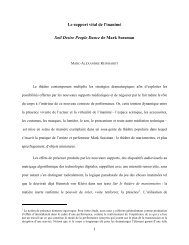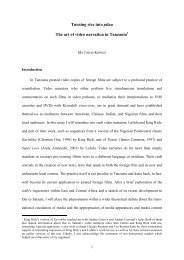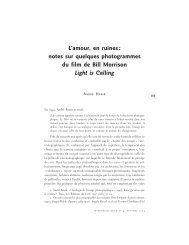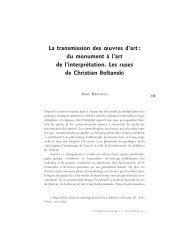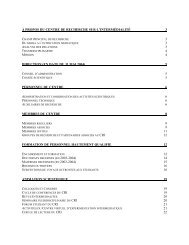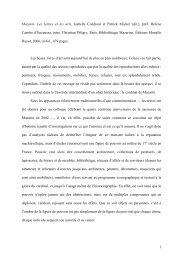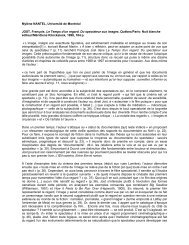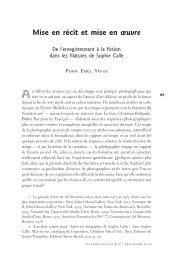Intermediality - Centre de recherche sur l'intermédialité (CRI ...
Intermediality - Centre de recherche sur l'intermédialité (CRI ...
Intermediality - Centre de recherche sur l'intermédialité (CRI ...
You also want an ePaper? Increase the reach of your titles
YUMPU automatically turns print PDFs into web optimized ePapers that Google loves.
46<br />
intermediality, intertextuality, and remediation<br />
a value that will be contextualized within the larger fi eld of the various existing<br />
approaches to intermediality and of their varying objectives.<br />
INTERMEDIALITY IN A BROAD SENSE — INTERMEDIALITY IN A NARROW SENSE<br />
Trying to reduce to a common <strong>de</strong>nominator the host of current conceptions of<br />
intermediality and the vast range of subject-matter they cover, we are forced to<br />
appeal to a very broadly conceived concept which would be limited neither to<br />
specifi c phenomena or media, nor to specifi c research objectives. In this sense,<br />
intermediality may serve foremost as a generic term for all those phenomena<br />
that (as indicated by the prefi x inter) in some way take place between media.<br />
“Intermedial” therefore <strong>de</strong>signates those confi gurations which have to do with a<br />
crossing of bor<strong>de</strong>rs between media, and which thereby can be differentiated from<br />
intramedial phenomena as well as from transmedial phenomena (i.e., the appearance<br />
of a certain motif, aesthetic, or discourse across a variety of different media). 6<br />
A broad intermediality concept of this kind allows for making fundamental<br />
distinctions between intra-, inter- and (ultimately) transmedial phenomena, at the<br />
same time representing a transmedially useful category. Yet such a broad concept<br />
does not permit us to <strong>de</strong>rive a single theory that would uniformly apply to the<br />
entire, heterogeneous subject-matter covered by all the different conceptions of<br />
intermediality, nor does it help us to characterize more precisely any one individual<br />
phenomenon on its own distinct formal terms. Accordingly, in or<strong>de</strong>r to cover<br />
and to uniformly theorize specifi c intermedial manifestations, more narrowly<br />
conceived (and often mutually contradictory) conceptions of intermediality have<br />
been introduced, each of them with its own explicit or implicit premises, methods,<br />
interests, and terminologies.<br />
Multiple factors contribute to the heterogeneity of these more narrow conceptions.<br />
Yet an assessment of the current intermediality <strong>de</strong>bate leads to the i<strong>de</strong>ntifi<br />
cation of three fundamental distinctions that un<strong>de</strong>rlie different conceptions of<br />
intermediality: the fi rst is between synchronically and diachronically conceived<br />
approaches. In fact, studies of intermediality inclu<strong>de</strong> both the “synchronic<br />
6. An example for this is the aesthetic of futurism, which was realized in different<br />
media (text, painting, sculpture, etc.) with the formal means specifi c to each medium.<br />
The concrete realization of this aesthetic is in each case necessarily media-specifi c, but<br />
per se it is nevertheless not bound to a specifi c medium. Rather, it is transmedially available<br />
and realizable, i.e., available and realizable across media bor<strong>de</strong>rs. In a similar way,<br />
one can speak of a transmedial narratology, referring to those narratological approaches<br />
that may be applied to different media, rather than to a single medium only.


